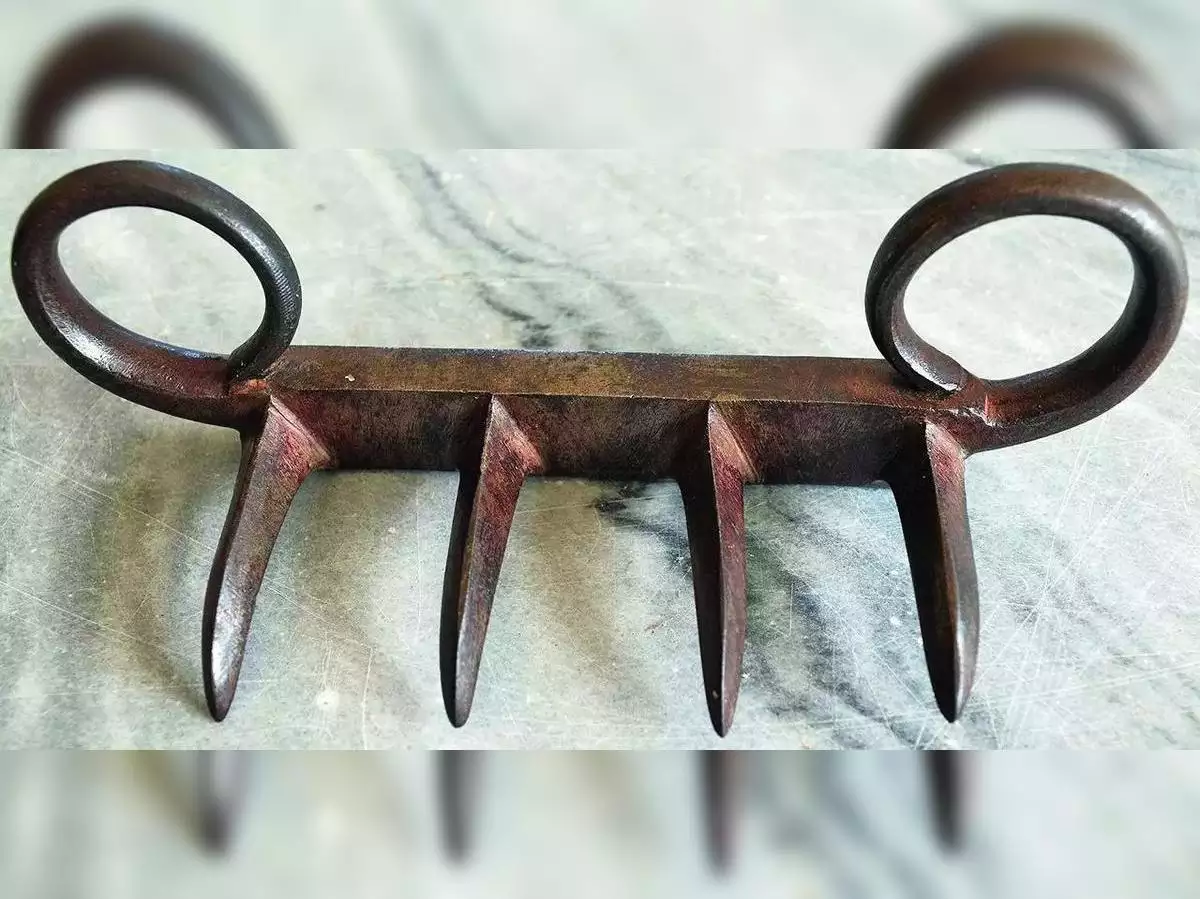Indian History
Chhatrapati Shivaji Maharaj’s Wagh Nakh
- 10 Oct 2023
- 7 min read
For Prelims: Wagh Nakh, Chhatrapati Shivaji, Chauth , Sardeshmukhi, Saranjam
For Mains: Maratha Empire and Administration.
Why in News?
Maharashtra’s Cultural Affairs Ministry has signed a memorandum of understanding (MoU) with the Victoria and Albert Museum in London to bring back Chhatrapati Shivaji Maharaj’s legendary “Wagh Nakh” a formidable medieval weapon to the state.
- The MoU states that the antique weapon will be handed over to the Government of Maharashtra on a loan basis for a period of three years, during which it will be displayed in museums across the state.
What is the 'Wagh Nakh'?
- The 'wagh nakh,' literally translating to 'tiger claws,' is a unique medieval dagger used across the Indian subcontinent.
- This fearsome weapon featured four or five curved blades affixed to a glove or a bar, designed for personal defence or stealth attacks.
- Its sharp blades were capable of slicing through skin and flesh with ease.
- Chhatrapati Shivaji's Defense with the 'Wagh Nakh':
- Chhatrapati Shivaji faced Afzal Khan, a Bijapur general assigned to stop Shivaji's strong campaigns in the Konkan. Khan suggested a peaceful meeting, but Shivaji, anticipating danger, came prepared.
- He concealed a 'wagh nakh' and wore chainmail (armour made from small metal rings) under his attire. When Khan attacked, Shivaji's 'wagh nakh' struck, resulting in Khan's death, ultimately securing Shivaji's victory.
- Chhatrapati Shivaji faced Afzal Khan, a Bijapur general assigned to stop Shivaji's strong campaigns in the Konkan. Khan suggested a peaceful meeting, but Shivaji, anticipating danger, came prepared.
What are the Key Points Related to Chhatrapati Shivaji Maharaj?
- Birth:
- Born on 19th February 1630, at Shivneri Fort in Pune District, Maharashtra, he was the son of Shahaji Bhonsle, a Maratha general with jagirs in Pune and Supe under the Bijapur Sultanate, and Jijabai, a deeply religious woman who greatly influenced him.
- Important Battles:
| Battle of Pratapgad, 1659 |
|
| Battle of Pavan Khind, 1660 |
|
| Sacking of Surat, 1664 |
|
| Battle of Purandar, 1665 |
|
| Battle of Sinhagad, 1670 |
|
| Battle of Kalyan, 1682-83 |
|
| Battle of Sangamner, 1679 |
|
- Titles:
- He took on the titles of Chhatrapati, Shakakarta, Kshatriya Kulavantas and Haindava Dharmodhhaarak.
- Administration under Shivaji:
- Central Administration:
- He established a centralised administration with a council of eight ministers (Ashtapradhan) who were directly responsible to him and advised him on various matters of the state.
- The Peshwa, also known as the Mukhya Pradhan, originally headed the advisory council of Raja Shivaji.
- Provincial administration:
- Shivaji divided his kingdom into four provinces. Each province was further divided into districts and villages. The village was the basic unit of administration and was governed by a Deshpande or Patel with the help of a village panchayat.
- Like the centre, there was a committee or council of eight ministers with Sar-i- ‘Karkun’ or the ‘prantpati’ (Head of the province).
- Revenue Administration:
- Shivaji abolished the Jagirdari System and replaced it with the Ryotwari System, and made changes in the position of hereditary revenue officials which were popularly known as Deshmukhs, Deshpande, Patils , and Kulkarnis.
- Shivaji strictly supervised the Mirasdars who had hereditary rights in land.
- The revenue system was patterned on the Kathi system of Malik Amber in which every piece of land was measured by Rod or Kathi.
- Chauth and Sardeshmukhi were other sources of income.
- Chauth amounted to 1/4th of the standard that was paid to Marathas as a safeguard against Shivaji’s forces raiding non-Maratha territories.
- Sardeshmukhi was an additional levy of 10% demanded from areas outside of the kingdom.
- Military Administration:
- Shivaji established an efficient army, paying ordinary soldiers in cash and high-ranking officials through jagir grants(Saranjam).
- His military included infantry (Mavali foot soldiers), cavalry (horse riders and equipment handlers), and a navy.
- Key roles included the Sar-i-Naubat (Senapati) in charge of the army, Qiladars overseeing forts, Nayaks leading infantry units, Havaldars heading groups of five Nayaks, and Jumladars overseeing five Nayaks.
- Shivaji established an efficient army, paying ordinary soldiers in cash and high-ranking officials through jagir grants(Saranjam).
- Central Administration:
- Death:
- Shivaji passed away in Raigad in 1680 and was cremated at the Raigad Fort. Shivaji Maharaj Jayanti is celebrated each year on 19th February to remember and praise his courage, warfare tactics and administrative skills.





